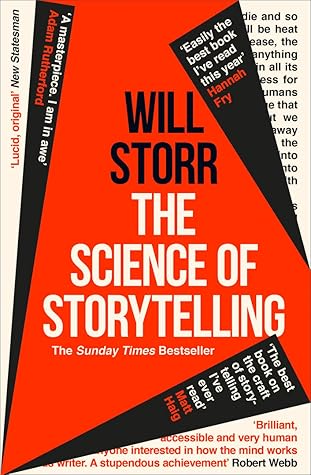More on this book
Community
Kindle Notes & Highlights
You’ll never experience actual reality because you have no direct access to it.
If a tree falls in a forest and there’s no one around to hear it, it creates changes in air pressure and vibrations in the ground.
Craziness happens partly because the fact-checking senses are offline, and partly because the brain has to make sense of chaotic bursts of neural activity that are the result of our state of temporary paralysis.
This means the order in which writers place their words matters. This is perhaps why transitive construction – Jane gave a Kitten to her Dad – is more effective than the ditransitive – Jane gave her Dad a kitten.
Because writers are, in effect, generating neural movies in the minds of their readers, they should privilege word order that’s filmic, imagining how their reader’s neural camera will alight upon each component of a sentence.
For the same reason, active sentence construction – Jane kissed her Dad – is more effective than passive – Dad was kissed by Jane.
One study concluded that, to make vivid scenes, three specific qualities of an object should be described, with the researcher’s examples including ‘a dark blue carpet’ and ‘an orange striped pencil.’
Our errors about what others are thinking are a major cause of human drama. As we move through life, wrongly predicting what people are thinking and how they’ll react when we try to control them, we haplessly trigger feuds and fights and misunderstandings that fire devastating spirals of unexpected change into our social worlds.
A character in fiction, like a character in life, inhabits their own unique hallucinated world in which everything they see and touch comes with its own unique personal meaning.
When our attention rests upon a glass of red wine, say, a large number of neurons in different parts of the brain are simultaneously activated. We don’t have a specific ‘glass of wine’ area that lights up, what we have are responses to ‘liquid’, ‘red’, ‘shiny surface’, ‘transparent surface’, and so on. When enough of these are triggered, the brain understands what’s in front of it and constructs the glass of wine for us to ‘see’.


